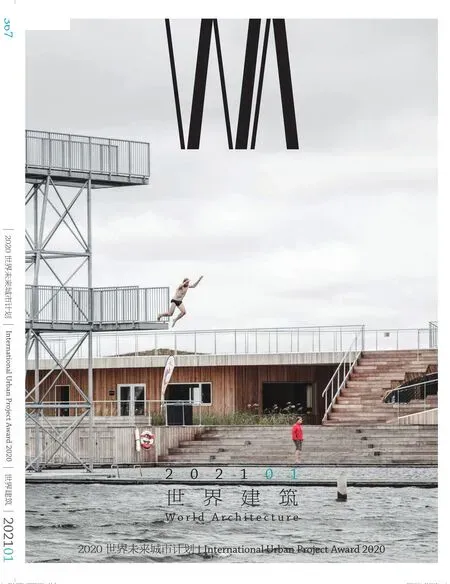吉首美术馆,湖南,中国
建筑设计:非常建筑
社会工程
美术馆所在的吉首市是湘西土家族、苗族自治州的州府。起初地方政府考虑在城外的开发区内选择建设用地,然而我们作为建筑师则建议将美术馆设立在人口密集的乾州古城的中心区,因为我们认为文化设施应该尽可能地方便居民使用。穿城而过的万溶江流经吉首的核心地带,因此我们构想了一座横跨江面、兼做步行桥的美术馆。我们希望人们不仅会专程去欣赏艺术,也可以在上班、上学或者购物的途中与艺术邂逅。
插入肌理
如今,许多诸如博物馆和剧院的当代文化设施都被当作独立的纪念物而远离社区。我们认为美术馆不应该从区位上脱离受众,因此将其嵌入到现有的城市肌理中,两岸的桥头部分与万溶江畔的排屋紧密相连在一起。这些排屋包含了店铺、餐馆、小旅馆,楼上通常便是屋主的居所。因此,吉首美术馆位于河两岸的入口都可以被视作混合功能街道界面的一部分,从而融入当地人的日常生活。
转释传统
被称作风雨桥的廊桥在我国山区里有着悠久的历史。除了跨越河流或山谷的功能,它们也是供旅人休憩、商贩摆摊售卖的公共空间。作为对这一古老建筑类型的当代诠释,我们的设计在保持传统廊桥的交通与歇脚功能的同时引入新的艺术内容,并将风雨桥的形式语言加以现代化。
桥梁建筑
美术馆以桥上桥的形式构成。下层的钢桥是开放的桁架结构,为行人通过提供了一个带顶的街道,同时也有助于疏导洪流;上层的现浇混凝土拱桥内部设有画廊。两桥之间是一个由玻璃幕墙和筒瓦遮阳系统围合而成的大展厅,用于举办临时展览。美术馆的服务空间如门厅、行政办公、商店和茶室则被安置在两端的桥头建筑内。人们可以从任意一侧河岸进入美术馆。
A Social Cause
The city of Jishou, where the Jishou Art Museum is located, is the regional capital of Xiangxi(western Hunan), a minority autonomous zone.Initially, the municipal government considered parcels of lands in the development zone outside the city; however, we the architects proposed to build the art museum in the centre of the old town because we believed that a cultural facility should be easily accessible. A river called Wanrong runs through the middle of Jishou, which makes the most central location for the art museum over the water course and the art museum then doubles as a pedestrian bridge naturally. We hope that people in Jishou would not only make a special trip to see art but will also encounter art on their way to work, to school, or to shop.
Urban Intervention
Typical contemporary cultural institutions in China, such as museums and theatres, are treated as freestanding monuments, from away from the communities. In Jishou, since we think an art museum should not be isolated from its users, it is inserted into the existing urban fabric, which is built up with row buildings along the Wanrong River that house shops, restaurants, bed-and-breakfasts,often with owners living upstairs. Therefore, the front entrances of the Jishou Art Museum on both riverbanks are part of the mixed-use street walls and integrated into the everyday life.
Reinterpretation of Tradition
Covered bridge has a long tradition in this mountainous region of China and named Fengyu Qiao, meaning wind-and-rain bridge, which is not only used for crossing river or valley but a public space where travellers take a rest and vendors set up stands. Our design creates a contemporary interpretation of the age-honoured building type.We introduced art as a new programme on a covered bridge while maintaining pedestrian traffic and stop meanwhile translating the formal language of the Fengyu Qiao into a modern one.
A Bridge-Building
The art museum is composed of two bridges,one on the top of the other. The lower level is an open steel truss structure that resembles a roofed street for pedestrians and allows the flow of floods;the upper level is a concrete arch cast in-situ with a painting gallery inside. In between the two bridges,glazed walls and tiled shading system enclose the art museum's main hall for temporary exhibitions.Supplementary spaces to the art museum, such as the entrance hall, administrative office, shop,and tearoom, are situated in the two bridgeheads at either end. People can enter the museum from either side of the river.
项目信息/Credits and Data
地点/Location: 中国湖南省吉首市乾州古城/Qianzhou Historic Town, Jishou, Hunan, China
客户/Client: 吉首市德夯风景名胜区管理处/Jishou Qianzhou Historic Town Administration
主持建筑师/Principal Architects: 张永和,鲁力佳/Yung Ho Chang, LU Lijia
设计团队/Design Team: 梁小宁,杨普,刘昆朋,粟思齐,饶岗/LIANG Xiaoning, YANG Pu, LIU Kunpeng, SU Siqi, RAO Gang
合作/Collaborators: 湖南省交通规划勘察设计院/Hunan Provincial Communications Planning, Survey & Design Institute
结构咨询/Structural Consultants: 常镪/CHANG Qiang
结构体系/Structural System: 钢桁架结构,钢筋混凝土拱结构/Steel truss, reinforced concrete arch
场地面积/Site Area: 3303.593 m2
基底面积/Built Area: 3535.4 m2
建筑面积/Floor Area: 669 m2
建筑高度/Height: 18.5 m
设计时间/Design Period: 2013-2016
施工时间/Construction Period: 2016-2019
竣工时间/Completion Time: 2019
绘图/Drawings: Atelier FCJZ
摄影/Photos: 田方方/TIAN Fangfang

1 总平面/Site plan
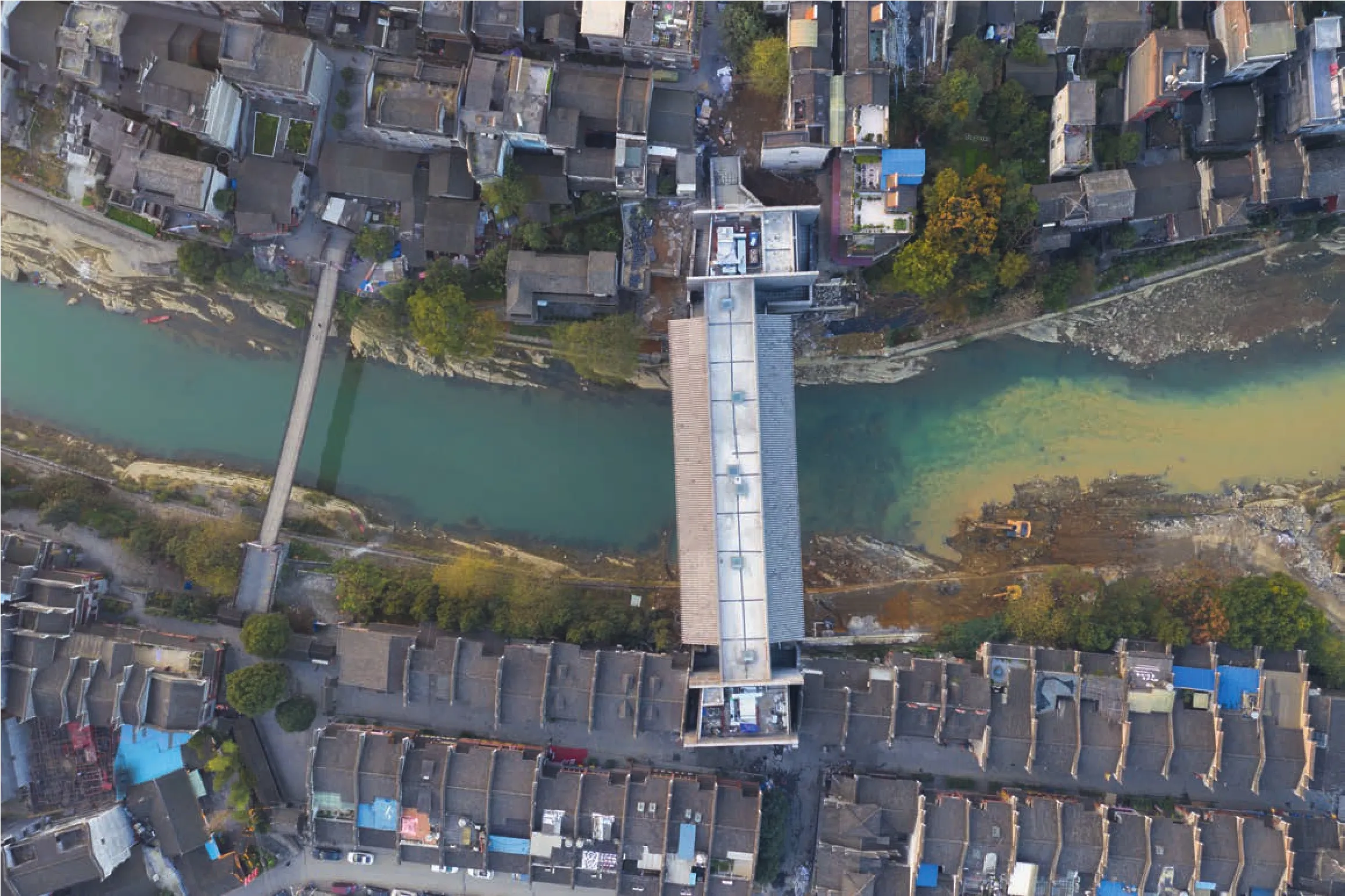
2 吉首美术馆嵌入现有城市肌理/JAM as an insertion in existing urban fabric
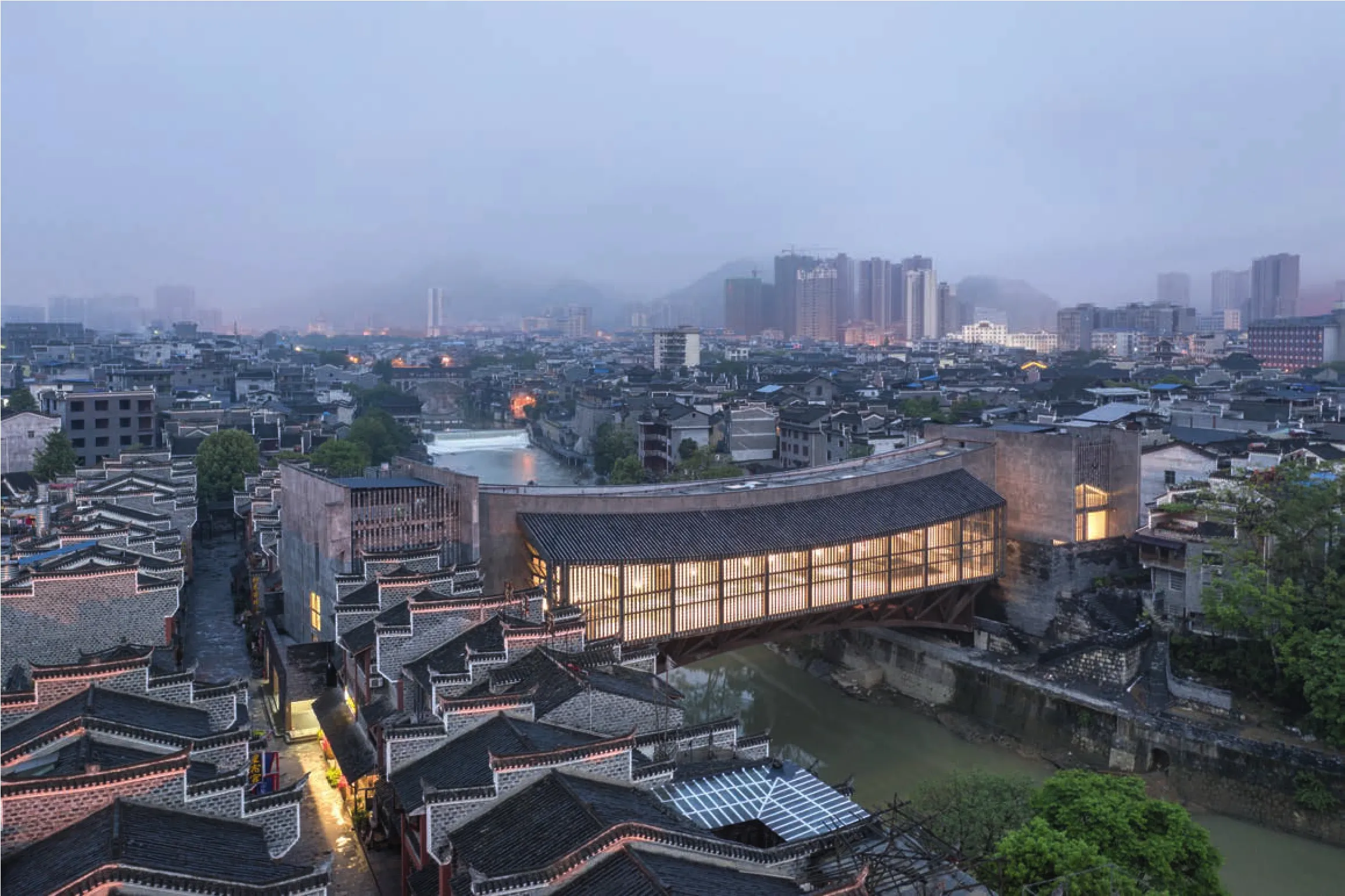
3 鸟瞰/Aerial view
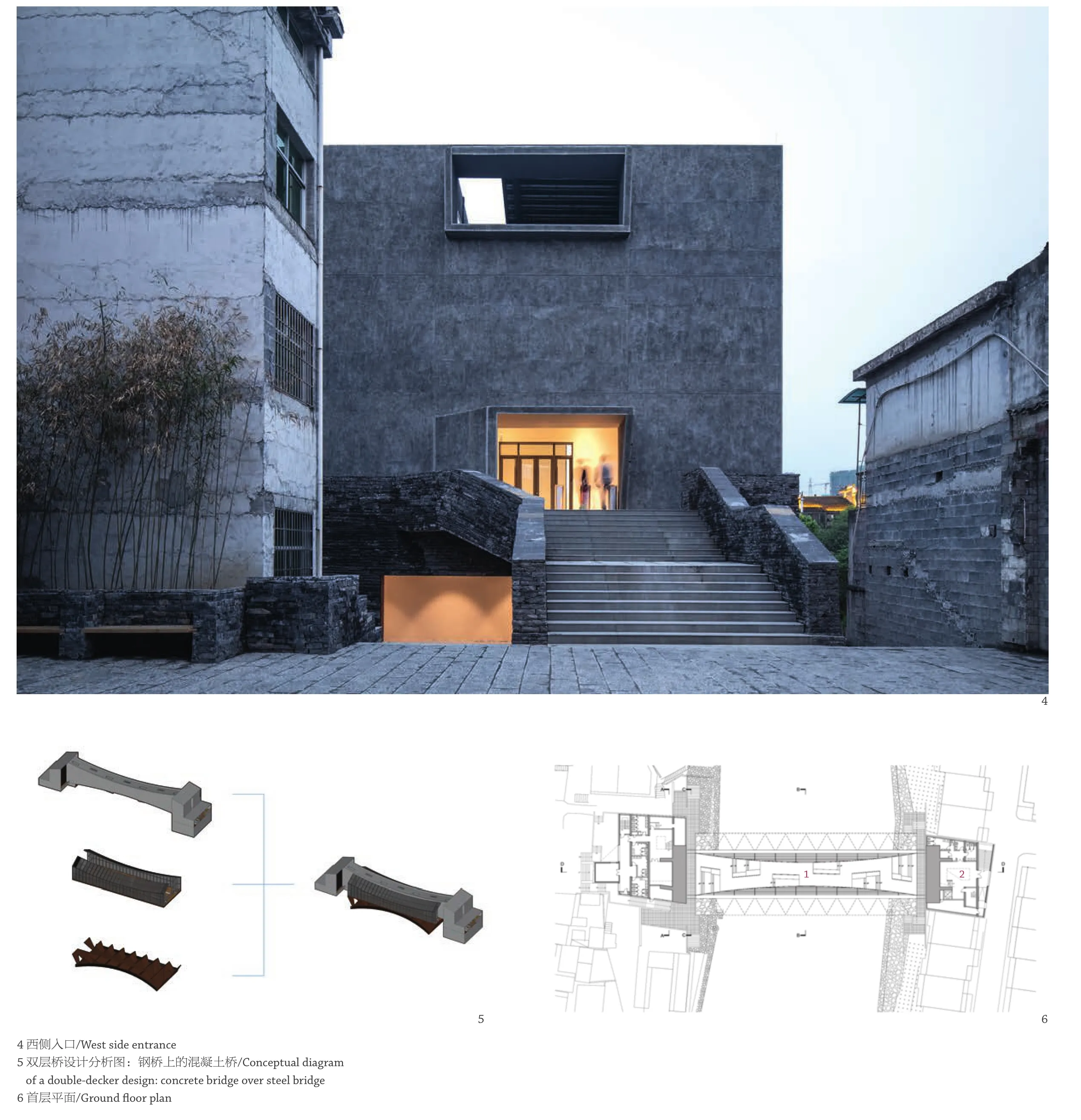
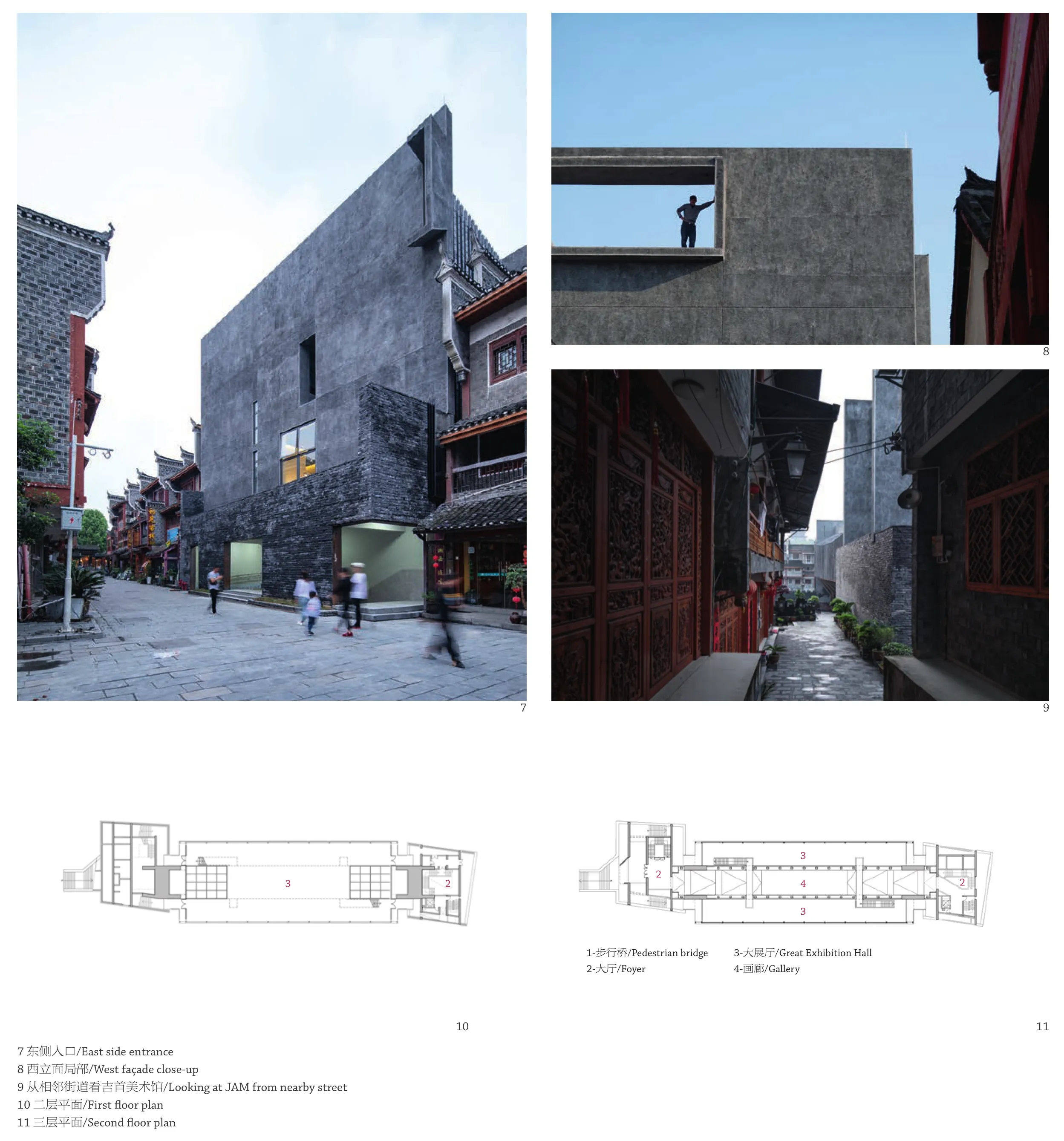
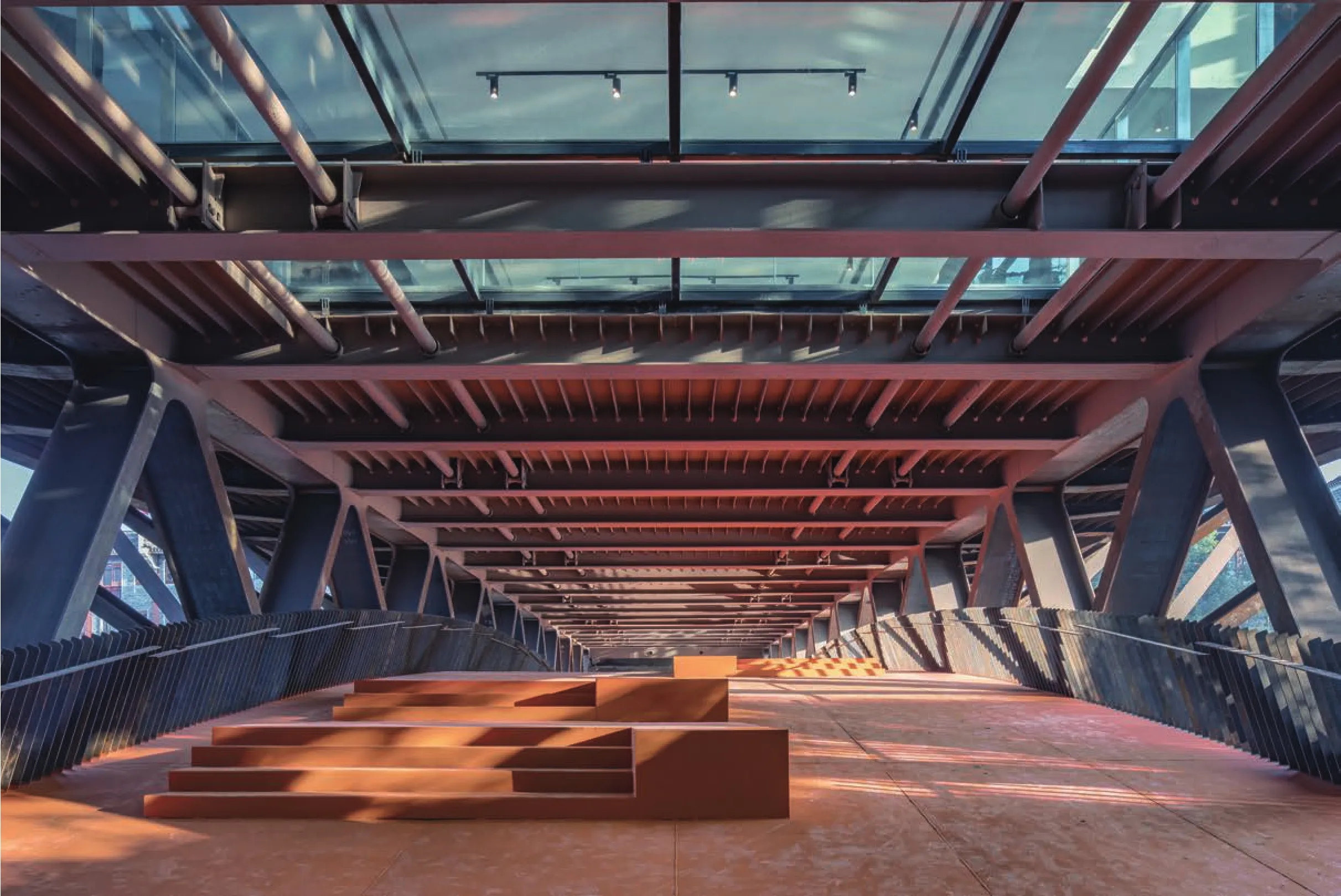
12 透过步行桥天窗仰望大展厅/Pedestrian bridge level with skylight looking into Great Exhibition Hall
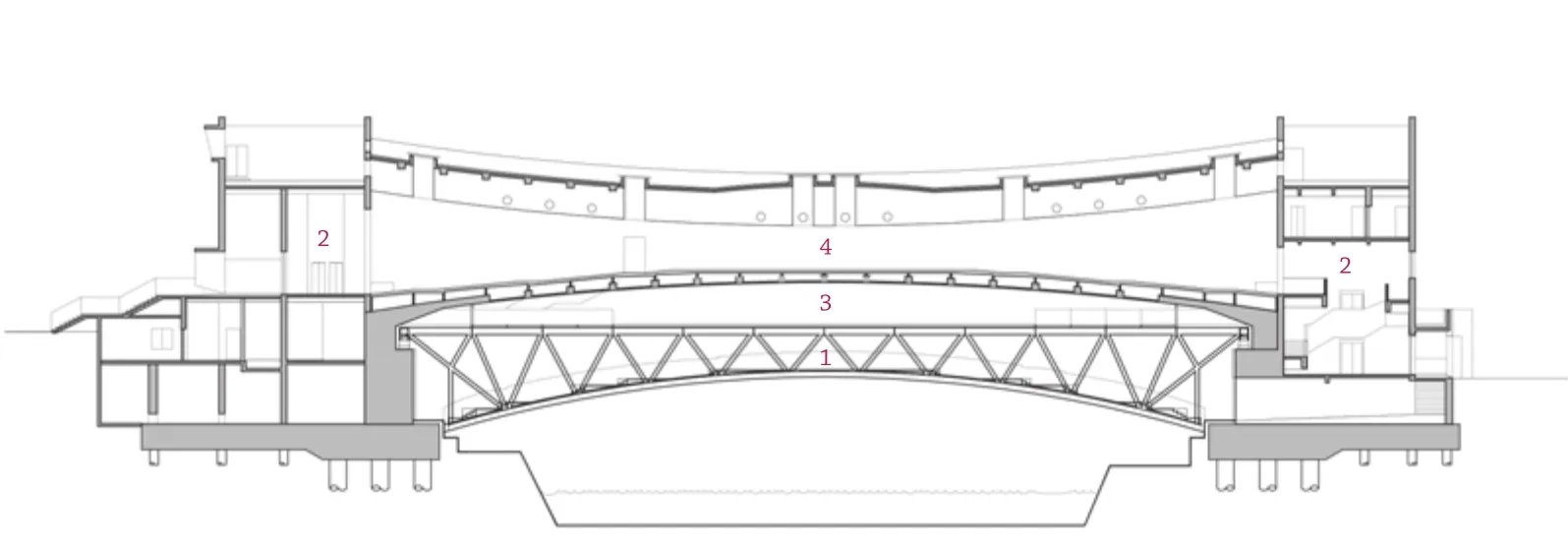
13 剖面/Section
1-步行桥/Pedestrian bridge
2-大厅/Foyer
3-大展厅/Great Exhibition Hall
4-画廊/Gallery
评委评语
谢尔盖·卓班:吉首美术馆的位置和设计重新诠释了传统的廊桥,将艺术作为一种新选择引入该建筑类型。这个新建的美术馆是非常出色的城市干预,因为它的位置是在一座连接了河两岸两座城市的桥上。作为一个公共走廊和一个艺术空间,美术馆既创造出一个重要的步行设施,同时也提供了一个文化汇聚空间。(钱芳 译)

14 大展厅/Great Exhibition Hall

15 由三楼平台看大展厅/Great Exhibition Hall from second floor balcony
Jury Statement
Sergei Tchoban: The location and design of Jishou Art Museum reinterprets the traditional covered bridge and introduces art as a new programme to this typology.What makes this new art museum an outstanding urban intervention is its location on a bridge,connecting the two cities on both sides of the river with each other. As a public walkway and an art space, the museum creates an important pedestrian infrastructure as well as a central cultural meeting space.

